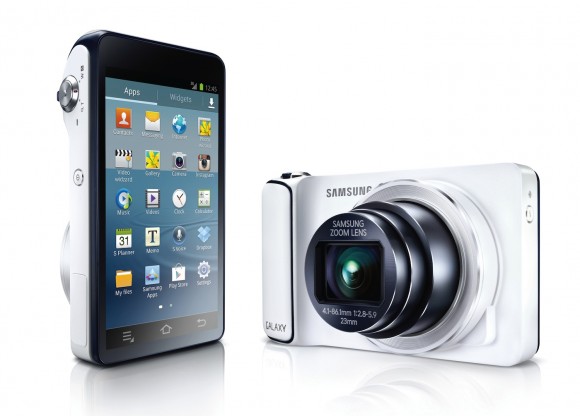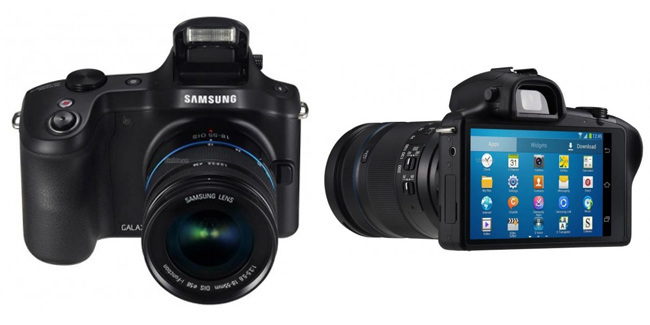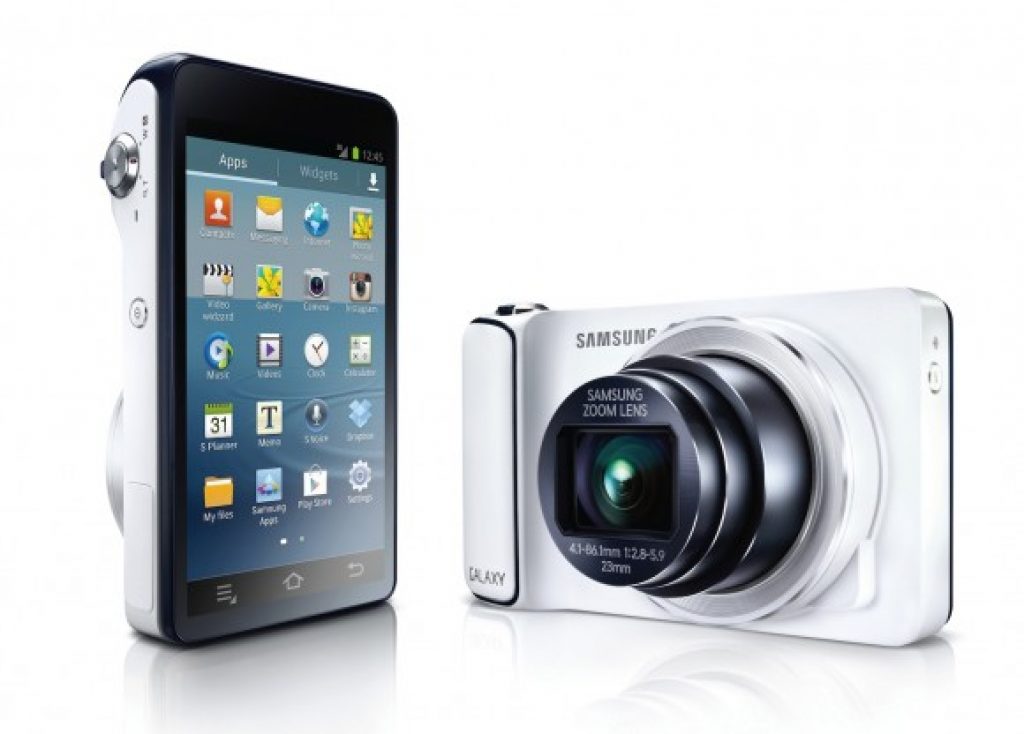Nokia and partner Microsoft, whose Lumia 1020 I wrote about two days ago, don’t (of course) have exclusive license to innovation within the camera-inclusive smartphone space. Take, for example, Samsung’s Galaxy S4 Zoom, built (as the name implies) on the foundation of the Galaxy S4 precursor that Argus Insights CEO John Feland discussed in a recent market analysis presentation. Whereas the Lumia 1020 relies on an ultra-high-resolution image sensor to deliver lossless zoom capabilities, the Galaxy S4 Zoom supplements a more conventional image sensor (pretty amazing that a 16+ Mpixel sensor in a cellphone can be called "conventional"!) with a 10x optical zoom that includes optical image stabilization support.
The Galaxy S4 Zoom, introduced in mid-June and shown in the above photo, includes not only cellular voice and text message capabilities but also cellular data support. And, like the other products discussed in this particular writeup, it's based on Google's Android operating system. As BDTI Senior Software Engineer Eric Gregori noted in two posts to the Alliance website's discussion forum section last December, the potential ease of developing OpenCV-based embedded vision applications is therefore quite compelling. For more information, see a two-part article series developed by Gregori and NVIDIA's Shalini Gupta, Senior Mobile Computer Vision Engineer, earlier this year.
Although Android is best known for being the O/S basis for smartphones (like the Galaxy S4 Zoom) and tablets, its Linux origin and open-source attributes make it equally applicable for leverage in other products such as conventional cameras. Last August, for example, Samsung introduced the first-generation Galaxy Camera, without conventional phone capabilities but with cellular data connectivity in addition to Wi-Fi and Bluetooth wireless options (here's a thorough recent review):

Six months later, Samsung followed up with a slightly less expensive Galaxy Camera variant that dispenses with cellular data support (along with the requisite monthly subscription fee paid by the camera owner to a cellular carrier). And in June, the company unveiled (one week after the Galaxy S4 Zoom) a more advanced camera called the Galaxy NX, with interchangeable lense support and whose official specs and pricing only became available yesterday:

Samsung seems determined to spread Android cognizance across the company's camera line over time, a strategy that makes a great deal of sense, and not just for embedded vision application developers 😉 And it's a strategy that other manufacturers will also likely follow to at least some degree, as they evaluate the respective strengths and shortcomings of proprietary versus open approaches. Consider Nikon's Coolpix S800c, for example.


